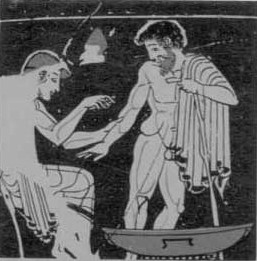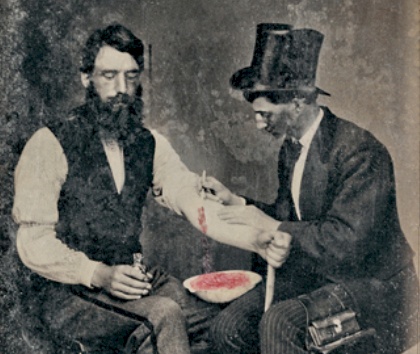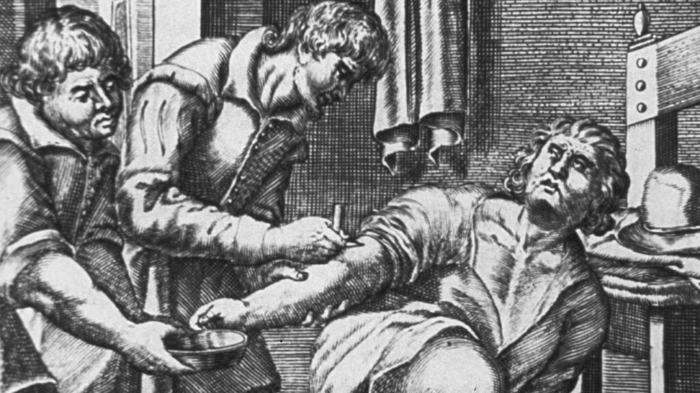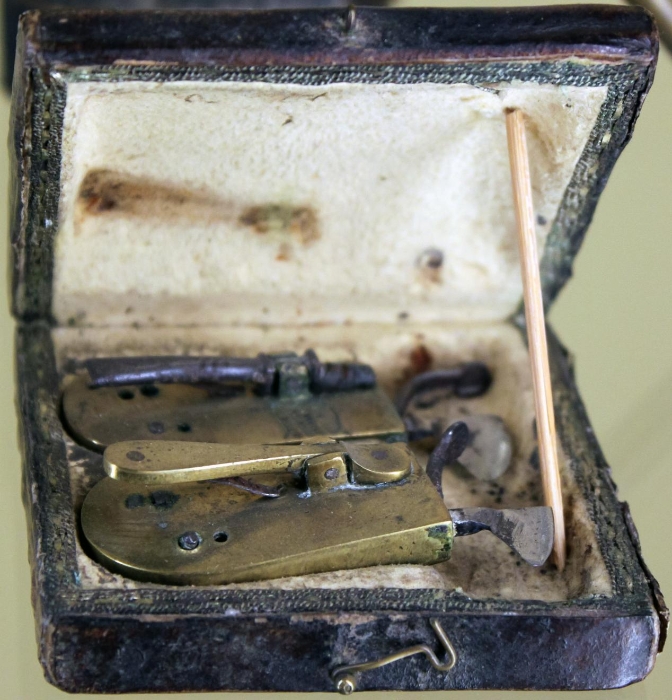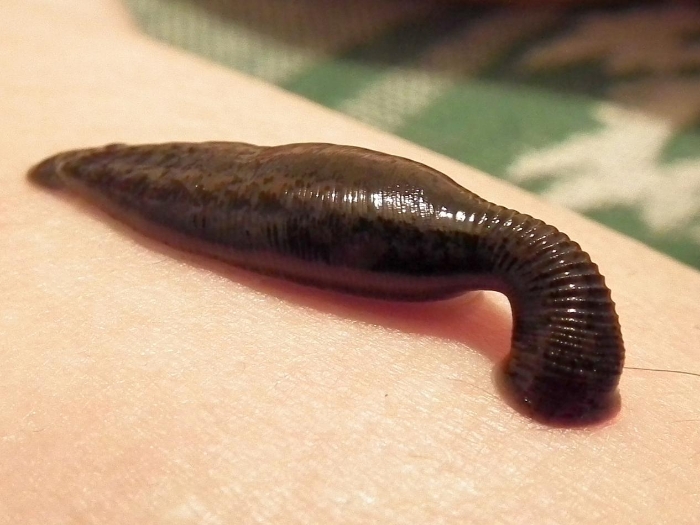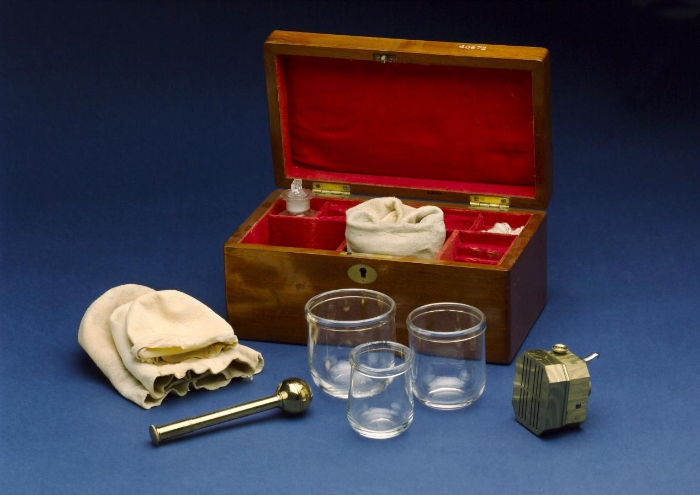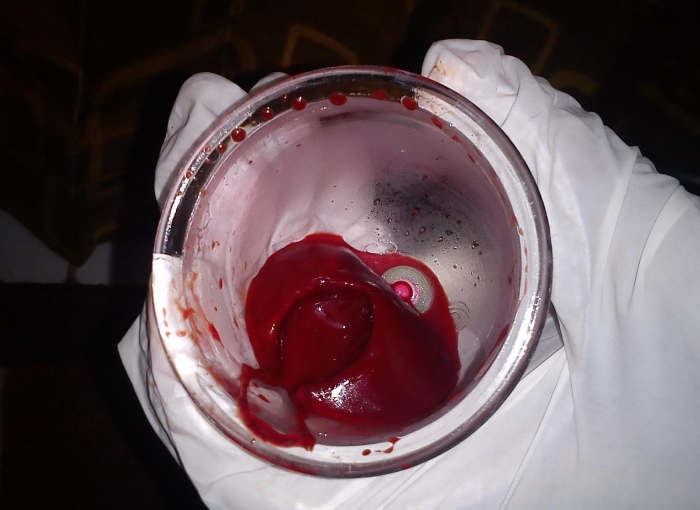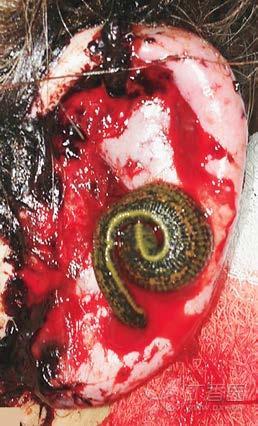The Smash Hit of Bloodletting Therapy
The bloodletting therapy in Europe can be traced back to more than 3,000 years ago.
Today, we all know that blood is very important to human body. If too much blood is lost, one will die. In clinical practice, blood transfusion is also an important means to save life.
However, you may have heard of (or even personally seen or experienced) bloodletting therapy. This treatment protocol is not only found in traditional Chinese medicine, but also prevailed in the Western medical history.
Bloodletting Therapy that Swept Europe
The bloodletting therapy in Europe can be traced back to more than 3,000 years ago. Data show that many ancient ethnic groups, including ancient Egyptians, Greeks and Romans, considered bloodletting as a medical procedure.
Ancient Greeks depicted the scene in which a doctor bled a patient.
Image source: Wikipedia
However, the bloodletting therapy truly became a common treatment among doctors, which probably because of Galen, a famous Roman physician, who believed that the accumulation of blood in the body led to diseases and the cure was naturally bloodletting. For example, bloodletting from a vein behind the ear can treat dizziness and headaches, and bloodletting from the temporal artery near the temple can treat eye problems.
Unquestionably, Galen was an excellent physician who influenced the development of many disciplines, including anatomy, physiology, pathology, pharmacology and neurology, etc.
Why didn’t you learn something else... Image source: Wikipedia
Perhaps the influence of Galen was so big that the bloodletting therapy he approved became an accepted cure for almost all diseases by doctors for a long time. Even until the 19th century, some people relied on bloodletting to treat various diseases.
A bloodletting surgery in 1860. Image source: Wikipedia
Multifarious Bloodletting Therapies
Now that bloodletting is indispensable, necessary tools must be prepared. The most common and simplest way is to directly cut the vein with a knife to let blood out. Not many tools are required. A strap is used to tighten the arm (just like how doctors draw blood today). A knife is used to cut the bulging vein, and a container (e.g., a bowl) is used to catch the blood flowing out for ease of treatment. This method is also called “intravenous respiration”.
A doctor was bleeding a patient. Image source: National Library of Medicine
Even more scary than that, not all the treatments at that time were completed by doctors, hairdressers were also important members who administered bloodletting therapy on patients.
A hairdresser’s bloodletting kit. Image source: Wikipedia
Apart from using knives directly, leeches are also good helpers to doctors. As is known to all, the specialty of leeches is sucking blood. A leech’s body can swell to four times as big as before sucking blood, when it sucks blood up. Besides, leeches not only suck blood, but also release anticoagulant substances to make the wound bleed, which is really conducive to bloodletting therapy.
A leech is sucking blood. Image source: Wikipedia
Subsequently, the leech therapy became so popular that France once imported tens of thousands of leeches for bloodletting treatment. However, the horrible thing is that bloodletting therapy often makes patients faint because of blood loss. However, on the other hand, this therapy was considered beneficial, and the bleeding wouldn’t stop until the patients fainted.
Another popular bloodletting therapy, called cupping method, uses a glass filled with heated air (similar to cupping glass in TCM). When the air cools, a vacuum will be formed inside the cup and suck blood out of the wound that is cut open.
A bloodletting kit of cupping method. Image source: Wikipedia
It is beyond imagination that patients of the day generally trustful towards bloodletting therapy, believing that a little bloodletting can heal them. This regimen that sounds a little gory today even became the norm at that time.
Blood sucked out using the cupping method. Image source: Wikipedia
There were many people dying from it
Unfortunately, the blind trust of patients didn’t make treatment more effective. Instead, many people can be said to have died from bloodletting.
For example, Charles II of England, who suffered a stroke, died hurriedly after receiving bloodletting therapy and a series of other magical treatments.
For another example, George Washington, the U.S. president, originally caught a cold. But in the course of treatment, the doctor adopted took bloodletting therapy, and chose to let his blood out repeatedly when it didn’t work. It was entirely possible to say that he eventually died of excessive bleeding.
Doctors at the time believed in the miracle of bloodletting, for example, François-Joseph-Victor Broussais, a French doctor, used about 50 leeches to bleed his body for as many as 15 times because of dyspepsia.
Portrait of Broussais. Image source: Wikipedia
Benjamin Rush, who was also a big advocate of bloodletting therapy, proposed bloodletting for almost all diseases.
Portrait of Benjamin Rush. Image source: Wikipedia
Stepped down from the stage of history?
Luckily, there are more and more voices of opposition. Since the 19th century, the popularity of bloodletting therapy has gradually declined, and the medical community became aware of the harm of blood loss to patients, and bloodletting therapy gradually stepped down from the stage of history.
Today, few people would approve bloodletting blindly. However, bloodletting therapy didn’t completely die out. There are still a few diseases that may require it, such as hemochromatosis and polycythemia.
Sure enough, the treatment today is far more rigorous and must be done by professionally trained medical staff. Otherwise, patients will be subjected to unnecessary harms.
Leeches, by the way, haven’t completely disappeared in the medical field. Not only have they not disappeared, but also researchers have developed a variety of usages for them, for example, they can be used medical leeches for drainage in replantation surgery.
In a replantation surgery of severed ear, no suitable drainage vein was found, so a leech was used for drainage. It looked a little bloody, but still the effect was good. See the watermark for the Image source.
Perhaps, each treatment can come in handy as long as you wield it properly.

